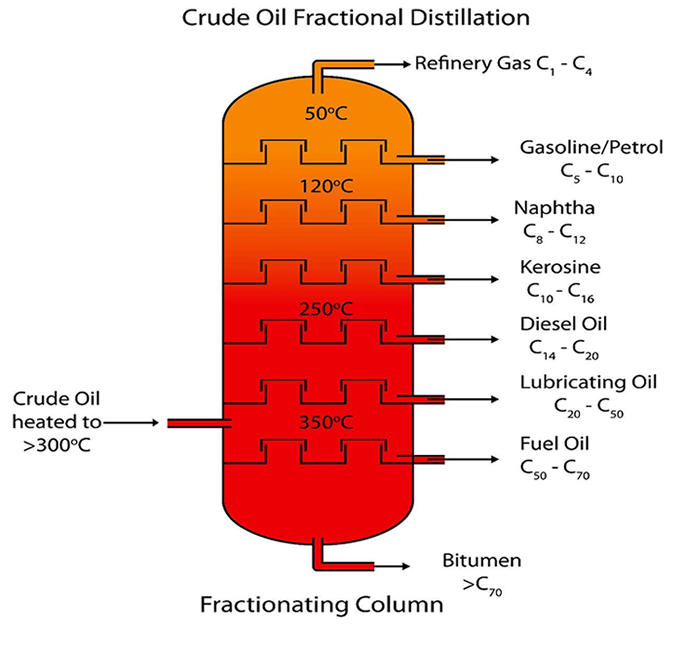Blending is the physical mixture of a number of different liquid hydrocarbon fractions to produce finished products with specific desired characteristics. Products can be blended in-line through a manifold system or batch blended in tanks and vessels. The in-line blending of gasoline, distillates, jet fuel, and lubricant base stocks is accomplished by injecting proportionate amounts of each component into the mainstream where turbulence promotes thorough mixing.
- Gasoline is blends of reformates, alkylates, straight-run gasoline, thermal and catalytically cracked gasoline, coker gasoline, butane, and appropriate additives.
- Fuel oil and diesel fuel are blends of distillates and cycle oils, and jet fuel may be straight-run distillate or blended with naphtha.
- Lubricating oils are blends of refined base stocks
- Asphalt is blended from various residual stocks depending on its intended use.
Additives are often mixed into gasoline and motor fuels during or after blending to provide specific properties not inherent in petroleum hydrocarbons. These additives include octane enhancers, anti-knock agents, anti-oxidants, gum inhibitors, foam inhibitors, rust inhibitors, carburetor (carbon) cleaners, detergents for injector cleaning, diesel odorizers, color dyes, distillate anti-static, gasoline oxidizers such as methanol, ethanol, and methyl tertiary butyl ether, metal deactivators and others.
Batch and in-line blending operations require strict controls to maintain desired product quality. Spills should be cleaned and leaks repaired to avoid slips and falls. Additives in drums and bags need to be handled properly to avoid strain and exposure. The potential for contacting hazardous additives, chemicals, benzene, and other materials exists during blending, and appropriate engineering controls, personal protective equipment, and proper hygiene are needed to minimize exposures.
Auxiliary Refinery Operations
Auxiliary operations supporting refinery processes include those which provide process heat and cooling; provide pressure relief; control air emissions; collect and treat wastewater; provide utilities such as power, steam, air, and plant gases; and pump, store, treat and cool process water.

